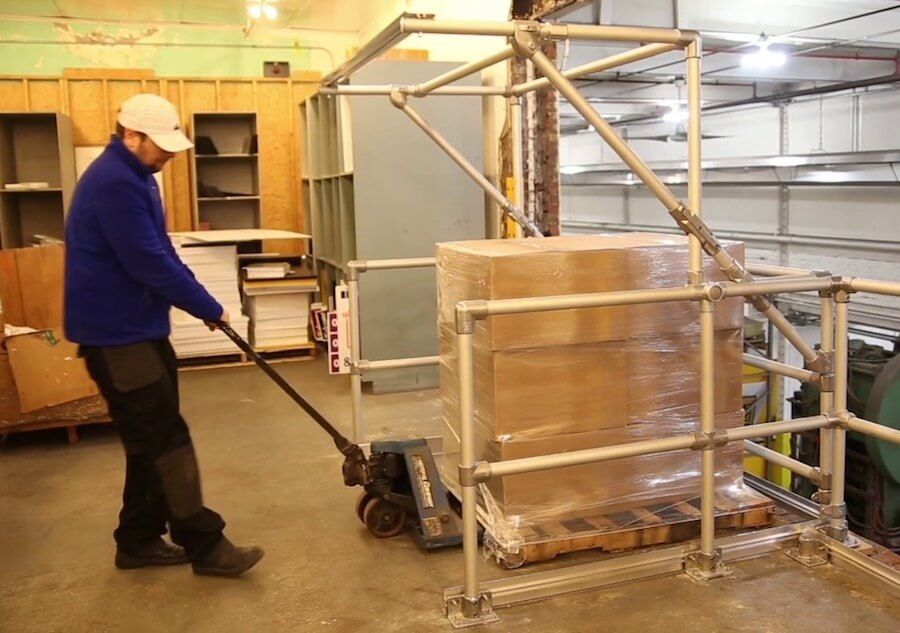Four Must Ask Questions When Choosing A Pallet Gate

Mezzanines in the workplace pose a great risk to employees. Though they are useful and often necessary for storage, the creation of additional fall hazards must not be overlooked. If you ever need to access an elevated platform, and that platform is more than 48" high, that perimeter must be protected with some form of fall protection like safety railing. However, inevitably a section in the fall protection must be removed or open to the edge for forklift access and pallets. This is where a pallet gate is imperative in protecting that area.
There are many different types of pallet gates, and it can be confusing choosing the right one for your facility or scenario. The last thing you want is to purchase something designed to protect workers from a fall only to find that it doesn’t physically fit or function within your workflow. Giving someone a false sense of security or simply not being aware of the dangers will be costly. Here are some questions to consider when choosing the best pallet gate for you.
- What Direction Is The Traffic Going?
- How Much Space Do You Have For Mounting?
- What Size Pallet/Materials Are You Loading?
- Do You Have Any Hazardous Material Classifications On-Site?
The gate is being used to protect the opening where items are moving either on or off an elevated platform. It is crucial to know which direction. Some will only ever need to be loaded from the floor up, while others from the mezzanine to the floor. Often times pallets need to go both ways. What you need to know is that certain gates will only allow safe traffic to go one direction. Be sure to read up on the product literature to confirm.
Mezzanines and platforms come in all shapes and sizes. Often times space can be extremely limited. You want to ensure you have the room to mount this gate on the floor. If you lack room there, do you have room to slide the gate horizontally or vertically? Some gates connect directly to existing railing, while others can mount to walls. Knowing your limitations in space will help narrow down your options.
Standard pallets are approximately 48" x 40”, however they do range in sizes. Most pallet gates should easily accommodate those, however it is important to also know the size of your materials on the pallet. You will need to calculate typical height of materials plus the height of the pallet. If your materials are hanging off the ends off the pallet, calculate this as well. Different gates can be customized to fit most dimensions.
Chances are if you are not aware of what this means, you either don’t need to worry about it or your company is out of compliance for not educating you on the risks. Essentially certain gates can have electric mechanisms or can be prone to potential sparks. It is important to know if you are in an environment where potential sparks can cause fires or worse, explosions. In this case, the type of pallet gate and the finish is extremely important.
Once you have answered these questions and selected a gate that fits all your criteria, there is one last question that must be addressed; what is being done to protect the worker while the gate is being used/open to the fall?
Pallet gates are a form of fall protection. Meaning it is your responsibility to be properly trained on how to use it, as well as create administrative controls to reduce the possibility of error. Never should someone be 15’ or closer to the open edge of a platform without some form of fall protection in place. When that gate is open, you have created that hazard.
There are several ways to address this issue to keep you and your colleagues safe and in OSHA compliance. We have a team of OSHA trained Fall Protection Experts on staff ready to help walk you through it if needed.



